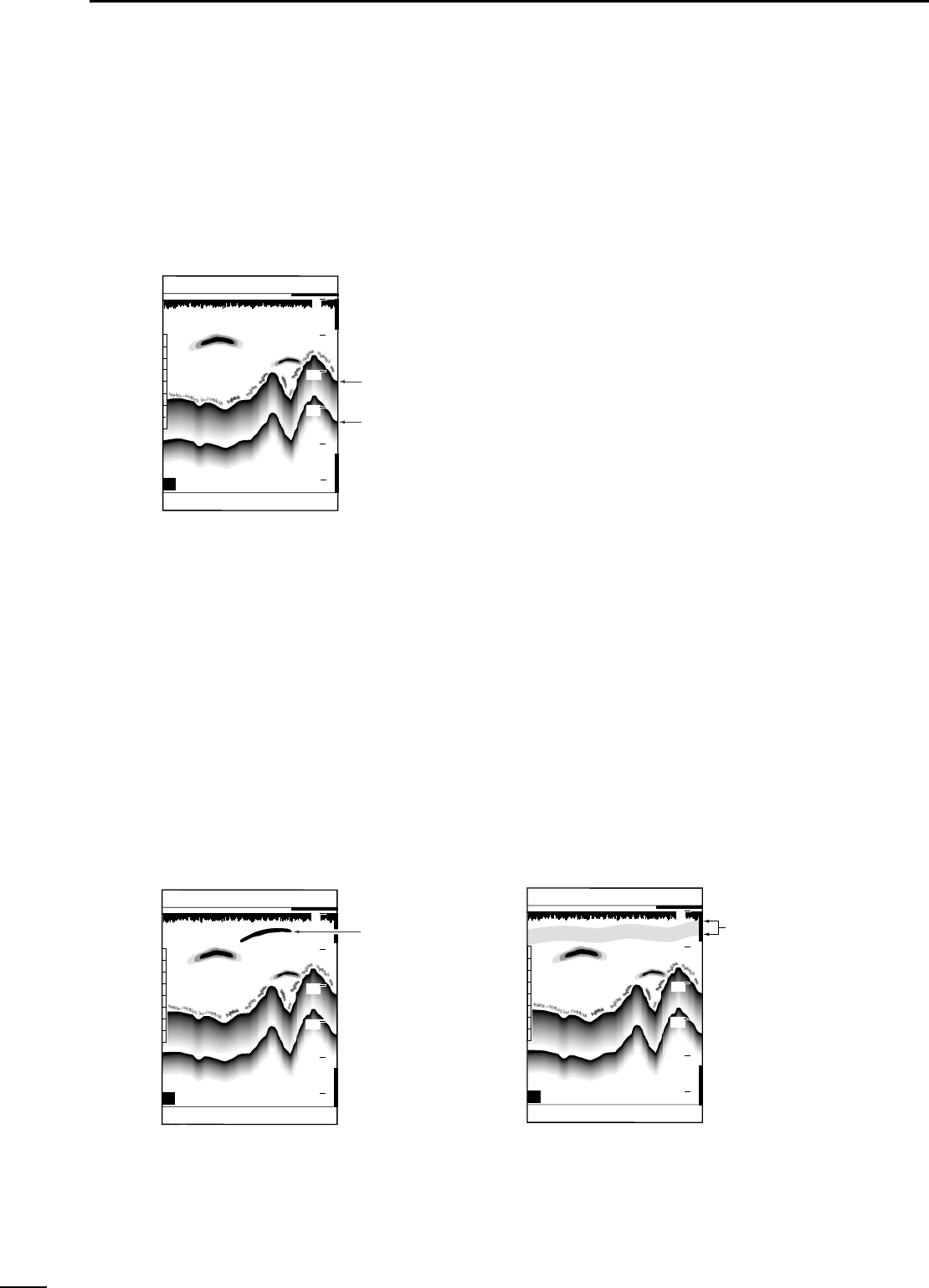
59
16
rSOUNDER MODEq HOW TO READ IMAGES
(16)-3 Secondary reflections
from the sea bottom
In shallow-depth areas, phantom contours of the sea bottom may often occur
under the actual contour.
These phantom contours of the sea bottom are caused by secondary reflections
from the sea bottom (bounce of the ultrasonic wave between the sea bottom and
the water surface or the ship). This symptom tends to occur in particular when the
ship bottom is rocky or a low frequency is used. The secondary contours will
appear at depths of integral multiples of the actual depth of water.
Actual contour
of the sea bottom
Phantom contour due
to secondary reflections
H
315°T 10.2KT 58°F
FT
43.4
GPS 48°21.417N 125°26.643W
20
40
60
80
0
100
Tidal current layer
H
315°T 10.2KT 58°F
FT
43.4
GPS 48°21.417N 125°26.643W
20
40
60
80
0
100
Plankton layer
H
315°T 10.2KT 58°F
FT
43.4
GPS 48°21.417N 125°26.643W
20
40
60
80
0
100
Plankton may sometimes gather and form a layer.
Such a layer looks like a cloud on the screen and may expand to the depths. Since
plankton forms the food of many fish, detection of plankton layers will lead to an
increase in fishery.
Plankton are light-sensitive, and live in the depth in the daytime and emerge to a
shallow depth at night.
Tidal current layers may occur depending on the speed or route of tidal cur-
rents.
In areas where different tidal currents encounter, air bubbles or plankton form a
layer, which is displayed on the screen, as in:
(16)-4 Plankton layers or tidal current layer
Å Plankton layers
ı Tidal current layers


















